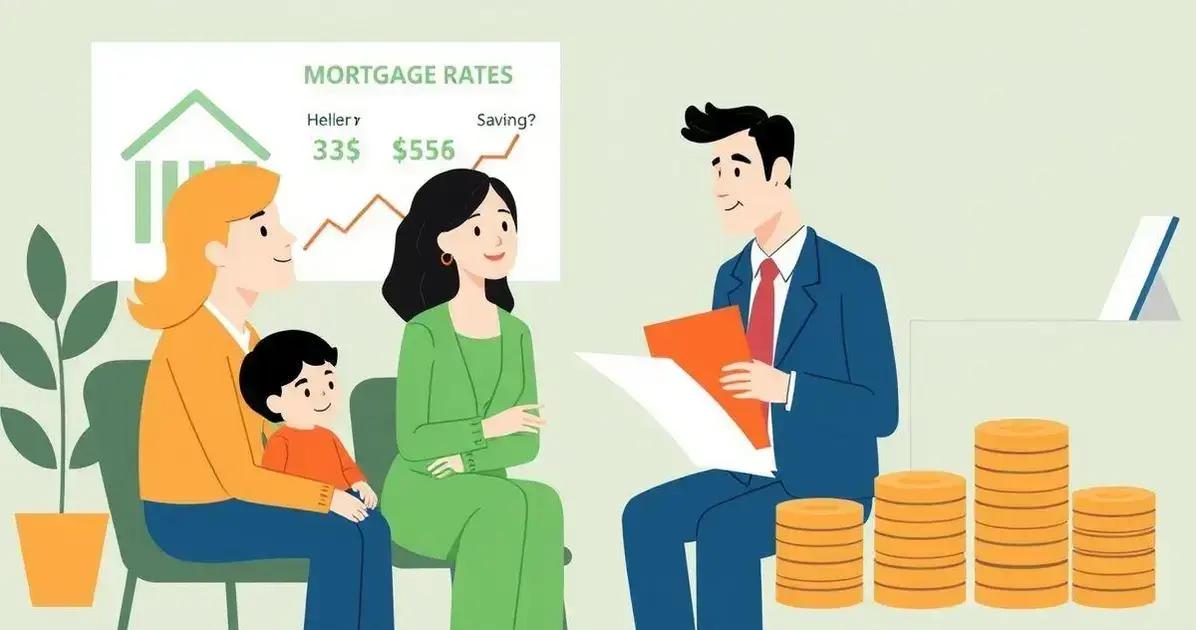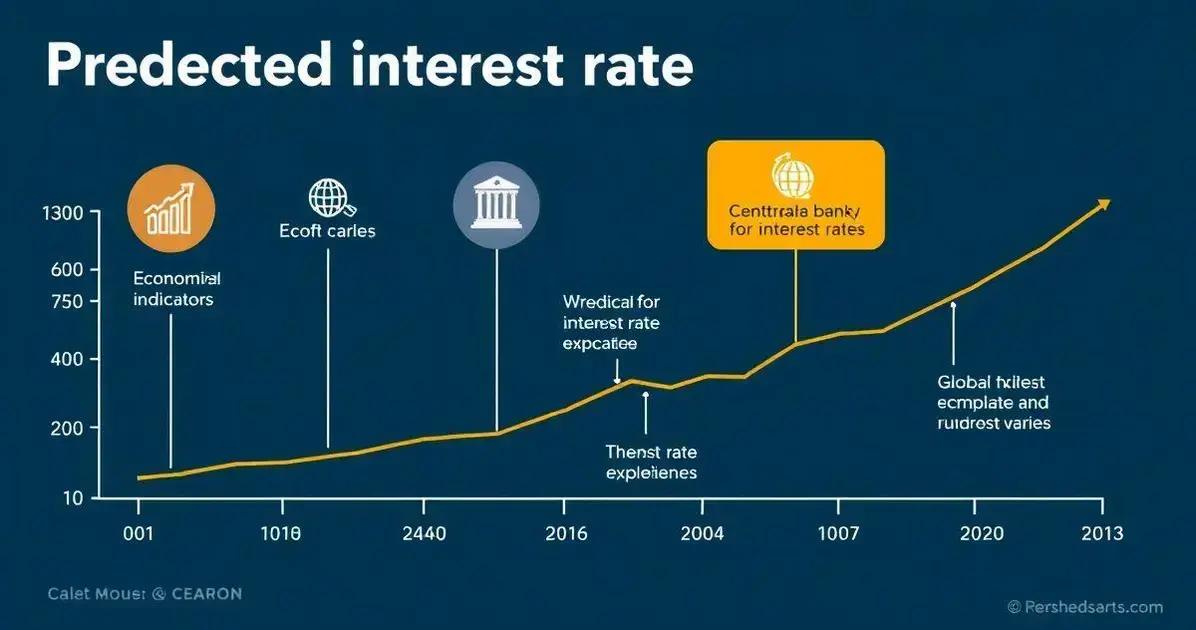Interest Rates Explained: What You Need to Know About Their Impact
Advertising
Interest rates significantly impact loans, mortgages, and economic growth, influencing borrowing costs and consumer spending. Understanding these trends equips individuals and businesses to make informed financial decisions and adapt to changing market conditions.
Interest Rates play a pivotal role in our financial landscape. They determine how much we pay for loans and earn on our savings. Understanding interest rates is crucial for making informed financial decisions. In this article, we’ll delve into their significance, exploring how they can affect your personal finances and the overall economy.
Understanding the Basics of Interest Rates
Understanding the basics of interest rates is essential for navigating the world of finance. Interest rates are the cost of borrowing money or the return earned on savings. They play a key role in the economy and affect various aspects of our financial lives.
What Are Interest Rates?
Interest rates are expressed as a percentage. When you borrow money, the lender charges you a fee based on the amount borrowed. This fee is the interest. For example, if you take out a loan of $1,000 at an interest rate of 5%, you will pay $50 in interest over a year.
Types of Interest Rates
There are two main types of interest rates: fixed and variable. Fixed rates remain the same throughout the loan period, making them predictable for borrowers. In contrast, variable rates can change based on market conditions, which can lead to varying costs over time.
How Are Interest Rates Determined?
Interest rates are influenced by several factors, including inflation, economic growth, and central bank policies. Central banks, like the Federal Reserve in the U.S., set benchmark interest rates. These rates affect how much banks charge for loans and pay for deposits.
The Importance of Interest Rates in Personal Finance
Understanding interest rates helps individuals make better financial decisions. They impact loans, mortgages, and even credit cards. Knowing how interest rates work allows a person to choose favorable financial products, potentially saving them money over time.
How Interest Rates Affect Loans and Mortgages

Interest rates have a direct impact on loans and mortgages, shaping the way individuals and families manage their finances. When you take out a loan, the interest rate determines how much you will pay over time.
How Interest Rates Affect Loan Payments
When you borrow money, the interest rate influences your monthly payments. A higher interest rate means larger payments, while a lower rate results in more affordable payments. For instance, a loan amount of $10,000 at a 7% interest rate will cost more in interest compared to the same loan at 4%.
The Role of Interest Rates in Mortgages
Mortgages, which are loans specifically for purchasing homes, are heavily affected by interest rates. A lower interest rate can make home buying possible for more people, while higher rates can reduce home affordability. If a family secures a mortgage at 3%, they pay less in total interest than if they had a mortgage at 6%.
Variable vs. Fixed Rates in Borrows
Borrowers can choose between fixed and variable interest rates. Fixed rates stay the same, giving borrowers stability in payments. Variable rates may lower over time but can also increase, leading to uncertainty in budgeting. Understanding these options helps borrowers choose what best suits their financial situations.
The Long-Term Effects on Finances
Interest rates can have long-lasting effects on personal finances. Higher rates can lead to higher debt levels and reduce disposable income because more money goes to interest payments. On the other hand, lower rates can enhance opportunities to invest or save for the future.
The Impact of Interest Rates on Economic Growth
The impact of interest rates on economic growth is significant, influencing various sectors of the economy. When interest rates change, they affect spending, investment, and inflation.
Interest Rates and Consumer Spending
When interest rates are low, consumers are more likely to borrow money for big purchases, such as homes or cars. This increased borrowing stimulates spending, which can help boost economic growth. Conversely, high interest rates can lead to decreased consumer spending, as the cost of loans grows. Less spending can slow down the economy.
Investment Decisions and Interest Rates
Businesses often rely on borrowed money to invest in new projects. Low interest rates make it cheaper for companies to borrow, encouraging them to invest in growth, hire new employees, and improve infrastructure. Higher interest rates can discourage this investment, leading to slower economic development.
The Relationship Between Interest Rates and Inflation
Interest rates also play a role in controlling inflation. Central banks may raise interest rates to reduce inflation by making borrowing more expensive. This helps slow down spending when prices rise too quickly. Managing inflation is crucial for maintaining stable economic growth.
Global Economic Influences
The effect of interest rates isn’t limited to the local economy. Changes in interest rates can impact international investment and trade. For example, if one country’s interest rates rise, it might attract foreign investors seeking better returns. However, this can lead to currency fluctuations, which also affect global trade dynamics.
Predictions for Future Interest Rate Trends

Predictions for future interest rate trends are essential for understanding how the economy may evolve. Economists and financial analysts utilize various indicators to forecast changes in interest rates.
Economic Indicators to Watch
Several key economic indicators can help predict interest rate trends. These include inflation rates, unemployment levels, and gross domestic product (GDP) growth. For instance, rising inflation often prompts central banks to increase interest rates to cool down the economy.
The Role of Central Banks
Central banks, like the Federal Reserve in the US, play a pivotal role in setting interest rates. Their policies and statements can provide insights into future trends. Investors and consumers alike pay attention to central bank meetings and decisions on interest rates.
Market Sentiment and Interest Rates
Market sentiment can also impact interest rate predictions. If investors believe that the economy is strengthening, they may expect higher rates. Conversely, pessimism about economic growth may lead to predictions of lower interest rates to stimulate the economy.
Global Factors Influencing Rates
Global economic trends can affect domestic interest rate predictions. Events such as geopolitical tensions, trade policies, and economic performance in other countries can influence local rates. Globalization means that economies are interconnected, making international events more impactful.
Understanding the Impact of Interest Rates
Interest rates are a critical factor in shaping the economic landscape. From affecting consumer spending to influencing loans and mortgages, they matter to everyone.
As we have seen, knowing how interest rates work can help individuals make better financial decisions, while their impact on economic growth shows the bigger picture of our financial ecosystem.
Predictions for future interest rate trends can guide personal investment choices and business strategies. Staying informed about these trends and understanding the factors that influence them can empower consumers and investors alike.
In summary, being aware of the intricacies surrounding interest rates can enhance financial literacy and promote better economic outcomes.
FAQ – Frequently Asked Questions About Interest Rates
What are interest rates?
Interest rates are the cost of borrowing money or the return on savings, typically expressed as a percentage.
How do interest rates affect loans?
Interest rates directly impact loan payments. Higher rates lead to larger payments, while lower rates make borrowing more affordable.
What is the difference between fixed and variable interest rates?
Fixed interest rates remain constant throughout the loan term, while variable rates can change based on market conditions.
What influences changes in interest rates?
Interest rates are influenced by factors such as inflation, economic growth, and central bank policies.
How do interest rates impact economic growth?
Low interest rates encourage borrowing and spending, which can stimulate economic growth. High rates may slow down spending and investment.
What should I consider when predicting future interest rate trends?
Consider economic indicators, central bank actions, market sentiment, and global economic influences when predicting interest rate trends.




